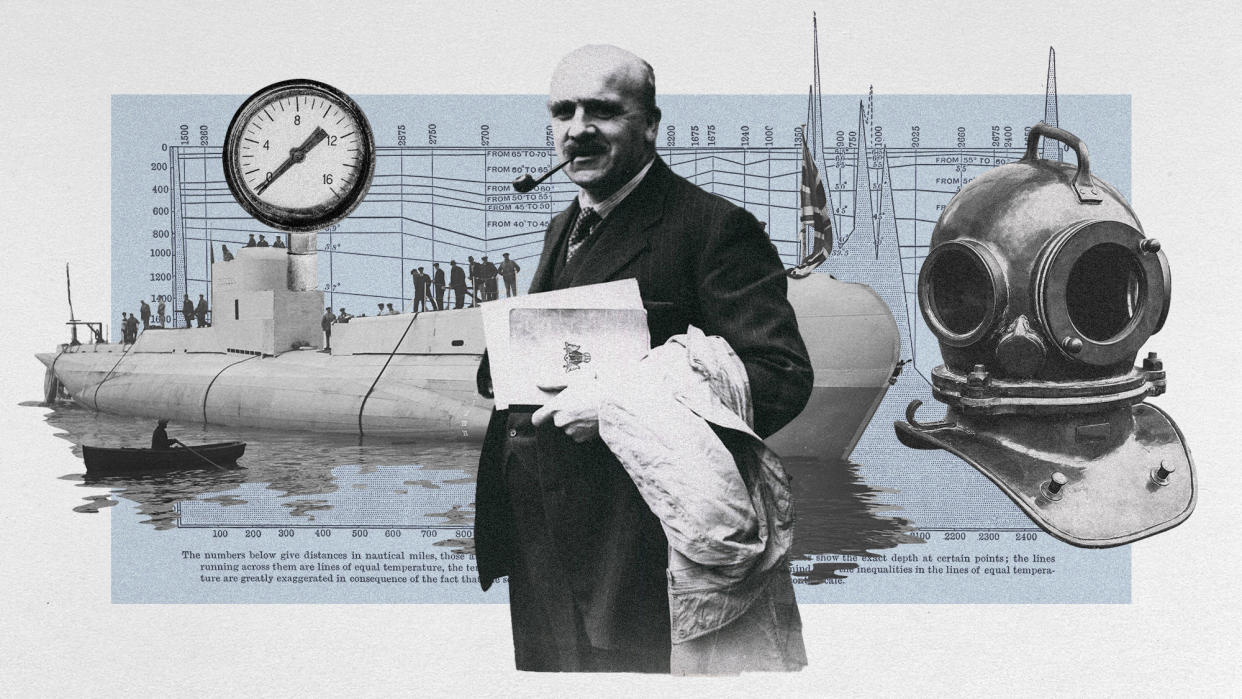The World War Two experiments that made D-Day possible

- Oops!Something went wrong.Please try again later.
World War Two was a time of huge sacrifices – including for a team of scientists in London, who conducted hundreds of dangerous experiments on themselves to help divers and submarine crews breathe underwater.
A new book has revealed for the first time how their discoveries would pave the way for D-Day, the largest seaborne invasion in history.
'Like nine glasses of booze'
Rachel Lance's book, "Chamber Divers: The Untold Story of the D-Day Scientists Who Changed Special Operations Forever", details "the many injuries and near-death experiences the researchers endured, from a broken spine to a collapsed lung", said Business Insider.
John Burdon Sanderson Haldane, from the genetics department at University College London, and members of his lab became "guinea pigs", conducting experiments in hyperbaric chambers, said the website.
They had been tasked with the job after a Royal Navy submarine sank during a dive test in 1939, killing 99 people whose breathing apparatus failed to save them.
It was gruelling research: they breathed different levels of carbon dioxide and oxygen to see how their bodies responded at different levels of pressure. CO2 gave them headaches and caused them to hyperventilate, but pure oxygen also led to violent seizures, vomiting and impaired vision.
Confining themselves into a small tube, Haldane and a colleague would also breathe in regular air, with its 78% nitrogen, to see if it affected their ability to answer maths question. "In short," said Lance in the Smithsonian, "they would see if nitrogen got them properly drunk."
They found it had the same impact as "imbibing nine glasses of straight booze", in "less time than it might have taken to drink the actual liquid".
Intoxication wasn't the only side effect of their work. During the 611 experiments they carried out, there were injuries: Haldane injured his back during a seizure, and one of his team dislocated her jaw. There was also a broken spine to a collapsed lung.
This was not the stuff of health and safety. "They put themselves in there for things that would not be legal today", Lance told NPR. "If I tried to do that, even if I had subjects who consented, I would possibly be criminally prosecuted."
Their pain and experimentation paid off: eventually, the team mixed oxygen and regular air to find a perfect blend that would allow divers and submarine crews to breathe without side effects.
Although the "groundbreaking research" was "buried under classification markings for generations", said Wired, their work and the pain involved are now available for all to see.
D-Day success
The discoveries were crucial for the success of one of British history's most significant hours. Ahead of D-Day, British teams would go over to Normandy and "sink down to the bottom during the day, breathe inside their safe, enclosed environment" and then "come up at night, crawl ashore, measure the sand, measure the beach angles, provide detailed maps, everything, and then go home", Lance told NPR.
This, and the success of D-Day itself, was thanks in part to the work of Haldane and his colleagues. Their dangerous experiments not only contributed to the famous invasion, said Business Insider, but also "contributed to the science behind modern-day scuba diving".

